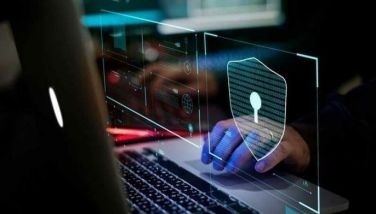5 predictions for enterprise IT in 2017
MANILA, Philippines – It is that time of year again for looking into the crystal ball and no matter how bright or dim the prospects are for the coming year, technology is evolving and will continue to evolve. In the enterprise space, more businesses are projected to embark on digital transformation journeys to streamline processes, save on cost and increase efficiencies. We have compiled a few predictions that research analyst firms see as the key trends that will dominate in 2017.
1 Bots will be hot!
Internet robots or simply “bots” have started to get a share of the tech limelight in 2016.
At Facebook’s F8 Developer Conference last February, Facebook CEO Mark Zuckerberg introduced chatbots (or chat robots) for Messenger. He demonstrated how one can order flowers simply by sending a message to 1-800-FLOWERS.com on Messenger like you would a friend. The bot, not a human customer service agent, will assist you in the purchase.
“I’ve never met anyone who likes calling a business and no one wants to install a new app for every service or business that they want to interact with. So we’ve got to introduce a better way to do it,” Zuckerberg said.
And to help businesses build and design bots for Messenger, Facebook rolled out the new Messenger Platform (beta) for developers, a simple platform powered by Artificial Intelligence (AI) so developers can build natural language and services for machines to communicate directly with people.
Now, Juniper Research expects 2017 to be the year of the chatbots. So expect to interact more with machines and algorithms than with humans in the coming year.
“Essentially a chatbot is a virtual agent which operate over social networks or messaging platforms to provide an automated response,” said Lauren Foye, research analyst at Juniper Research, in a recent webinar.
As chatbots are designed to aid in a number of business processes and remove the need for human-to-human interaction, the research firm sees a significant opportunity for businesses as they can aid in day-to-day activities such as e-commerce transactions or customer service inquiries.
“In 2017, Juniper sees more artificial intelligence programs launched into the mainstream,” continued Foye. “There is a significant opportunity for individual experiences where bots may target users with tailored offers and discounts. As such retailers and brands are likely to see greater chatbot integration for the services they offer.”
2 The year of the voice assistants
Apple has Siri, Microsoft has Cortana, Amazon has Alexa, Google has its Assistant.
Juniper Research predicts that the battle of the voice assistants will escalate further in 2016 as more of them will come on many different platforms - from smart home speakers and TVs to mobile apps.
The research firm forecasts that there will be 2.1 billion voice assistants in use in 2017.
“Voice assistants have taken the spotlight in a variety of ways in the past few years across several platforms,” said Steffen Sorrel, principal analyst at Juniper Research. “The opportunity for these assistants is to offer a more natural platform for companies to integrate their products in the way that communication with these services is more natural.
At the same time, Juniper sees it as a new avenue for advertisers to push content. “We also believe that advertisers will use these platforms to onboard consumers to use premium services on a trial basis,” Holden added.
3 More Augmented and Virtual Reality in marketing
Research firm International Data Corporation (IDC) predicts that more (30 percent of consumer-facing Global 2000) companies will experiment with augmented reality (AR) and virtual reality (VR) as part of their marketing efforts in 2017.
“Interfaces are the essential gateway to customer engagement and they are evolving much faster than many have anticipated,” IDC said in a recent media release.
It expects AR/VR to reach mass adoption levels by 2021 when more than a billion people worldwide will regularly access apps, content, and data through an AR/VR platform.
“2016 has been a defining year for AR as millions of consumers were introduced to Pokemon Go and, on the commercial side, developers and businesses finally got their hands on coveted headsets like Microsoft’s HoloLens,” said Jitesh Ubrani, senior research analyst for IDC Mobile Device Trackers. “AR may just be on track to create a shift in computing significant enough to rival the smartphone. However, the technology is still in its infancy and has a long runway ahead before reaching mass adoption.”
In 2016, major VR product launches include those from Oculus, HTC, Sony, Samsung, and Google. In the next 12 months, IDC sees more hardware vendors entering the space with products that cover the gamut from simple screenless viewers to tethered HMDs to standalone HMDs.
“The AR/VR headset market promises to be an exciting space to watch,” it added.
4 Finance technology to usher in more disruptions
The financial sector is set to witness increased disruption from the “technology first” players, according to Dr. Windsor Holden, head of Forecasting & Consultancy at Juniper Research, in the same webinar.
He said venture capital (VC) investments in fintech startups reached record levels in 2015, which reached almost $14 billion. Juniper expects big banks to partner with or acquire new fintech companies.
“In 2017, we believe that driven by the inability of the challenger banks to rapidly scale and maintain profitability compared to fintech incumbents, we will see a number of acquisitions and partnerships for the rollout of digital strategies.”
The opportunity is not just for the traditional banks but for technology firms as well competing to invest in the emerging fintech markets such as contactless payments or mobile payments. “It’s Juniper’s view that alongside the banks, they could and will, via startups, expand into the payment verticals,” he said.
5 Cybersecurity landscape
2016 saw a huge number and variety of cyber attacks - from high-profile denial of service (DDoS) attacks using hijacked internet-facing security cameras to the alleged hacking of party officials during the US election. Security firm Sophos said the year also saw a rising tide of data breaches and significant losses of people’s personal information.
Joergen Jakobsen, regional vice president for Asia-Pacific and Japan (APJ) at Sophos, sees the cybersecurity landscape becoming tougher in 2017.
For one, he said technology-based attacks have become increasingly political. Societies face growing risks from both disinformation (e.g., “fake news”) and voting system compromise.
“For instance, researchers have demonstrated attacks that might allow a local voter to fraudulently vote repeatedly without detection. Even if states never engage in attacks against their adversaries’ elections, the perception that these attacks are possible is itself a powerful weapon,” he said.
Not surprisingly, financial infrastructure is seen to be at greater risk of attack. “We also expect more attacks on critical financial infrastructure, such as the attack involving SWIFT-connected institutions which cost the Bangladesh Central Bank $81 million in February,” he said.
Moreover, as encryption becomes ubiquitous, it has become much harder for security products to inspect traffic, making it easier for criminals to sneak through undetected.
“Unsurprisingly, cyber criminals are using encryption in creative new ways. Security products will need to tightly integrate network and client capabilities, to rapidly recognize security events after the code is decrypted on the endpoint,” Jakobsen said.
- Latest



























